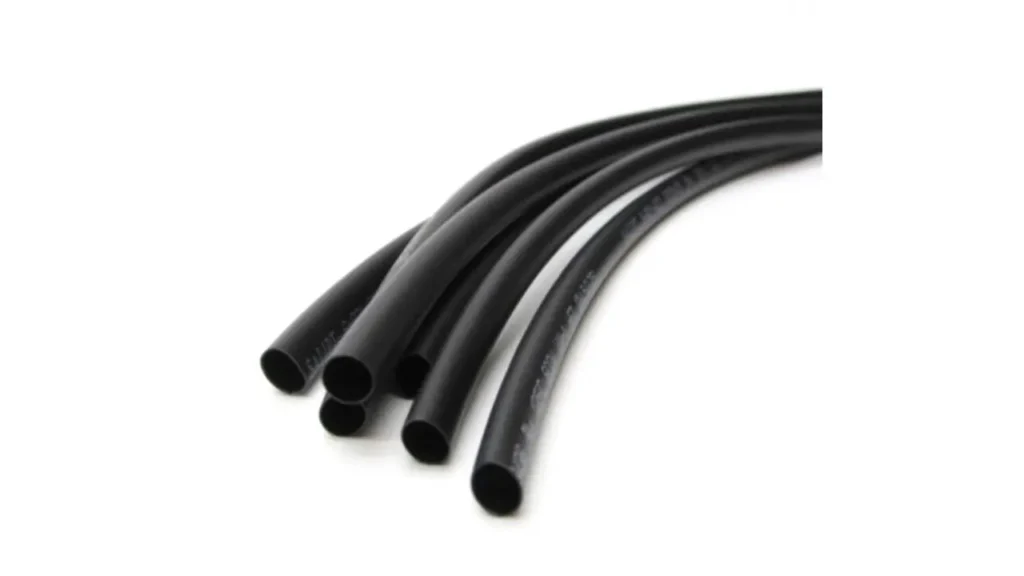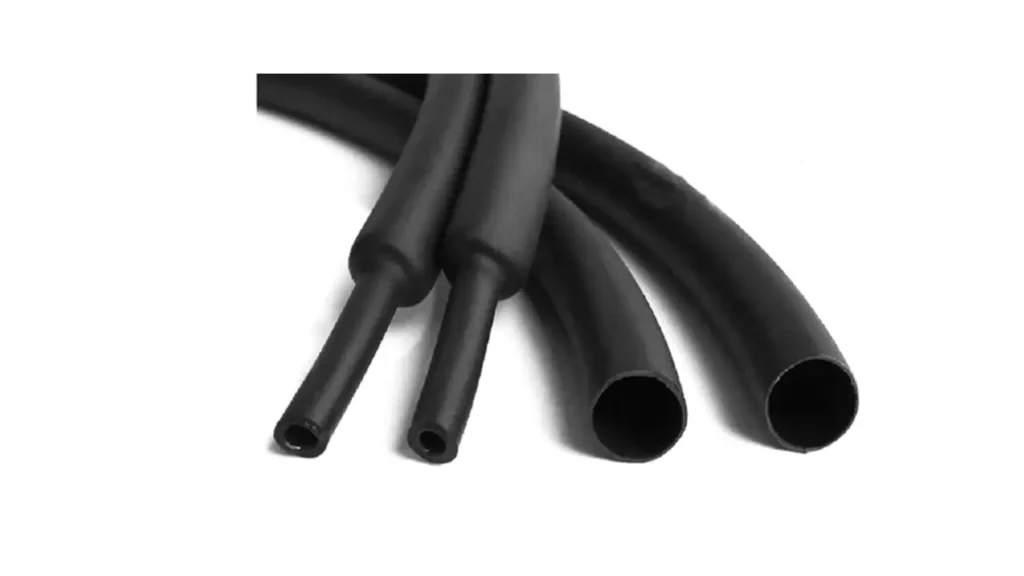Rubber hoses are versatile tools used in many industries, from automotive to industrial applications. Over time, they may require resizing or shrinking to fit specific equipment or tight spaces. Understanding how to shrink rubber hoses safely ensures efficiency and prolongs their lifespan, avoiding damage or leaks.
Several methods exist to shrink rubber hoses, including heat application, chemical treatments, and mechanical techniques. Choosing the right method depends on the hose material, thickness, and intended use. By following proper procedures, you can achieve a precise fit while maintaining the hose’s flexibility and durability for long-term performance.
Why Shrink Rubber Hoses?

Shrinking rubber hoses is essential for achieving a precise fit in tight spaces and maintaining system efficiency. Properly resized hoses prevent leaks, reduce strain on connections, and extend the hose’s service life. This process ensures that your hoses perform reliably under pressure and varying conditions.
- Improved Fit and Sealing: Shrinking hoses allows them to fit snugly over fittings or connectors. A proper seal reduces the risk of leaks, enhances system safety, and ensures consistent fluid or air flow, which is crucial for industrial and automotive applications.
- Enhanced Durability: A correctly resized hose experiences less stress and bending, minimizing wear and tear. This prolongs the hose’s lifespan, reduces maintenance costs, and prevents premature failure, providing long-term reliability for demanding operations.
- Space Optimization: In tight installations, hoses often need to conform to compact layouts. Shrinking ensures they occupy minimal space without kinking or deforming, allowing smooth fluid or air transfer while optimizing the overall design of your system.
- Cost Efficiency: Properly shrinking hoses avoids unnecessary replacements and downtime. By maintaining their functionality and preventing damage, you save on labor and material costs while ensuring continuous, efficient operation of your machinery or equipment.
How to Shrink Rubber Hose?

Shrinking rubber hoses requires careful handling to maintain their integrity while achieving a snug fit. By following step-by-step procedures, you can resize hoses safely and effectively, ensuring they perform reliably in various applications without damage or deformation.
Step 1: Clean the Hose
Before shrinking, clean the hose thoroughly to remove dirt, grease, or debris. A clean surface ensures even heat distribution or chemical application, preventing weak spots. Proper cleaning extends the hose’s lifespan and guarantees better adhesion to fittings during installation.
Inspect the hose for cracks or damage while cleaning. Any compromised areas may worsen during shrinking, leading to leaks or failure. Use mild detergents or approved cleaning solutions and allow the hose to dry completely to prepare it for the next step safely.
Step 2: Choose the Shrinking Method
Select the appropriate shrinking method based on the hose material, thickness, and intended application. Common methods include heat application, chemical shrinking agents, or mechanical tools. The correct choice ensures even shrinkage without damaging the hose structure.
Consider factors like temperature tolerance, flexibility, and hose diameter. Using the wrong method may cause deformation, hardening, or cracks. Understanding your hose’s specifications and the recommended shrinking techniques ensures safe and efficient resizing.
Step 3: Apply Controlled Heat
If using heat, apply it gradually and evenly along the hose length. Controlled heat softens the rubber, allowing it to shrink without burning or melting. Avoid direct flames; use heat guns or warm water baths for uniform temperature distribution.
Maintain consistent motion while heating to prevent localized overheating. Monitor the hose carefully and stop heating once the desired size is reached. Allow the hose to cool naturally to preserve elasticity and prevent internal stress or deformation.
Step 4: Use Mechanical or Chemical Assistance
Mechanical shrinking tools, such as clamps or mandrels, can help achieve precise sizing. Alternatively, chemical shrinking solutions soften the hose temporarily, allowing it to compress around fittings. Both methods require careful monitoring to avoid over-shrinking or damage.
Ensure tools are properly calibrated and chemicals are applied according to safety instructions. Gradual adjustment provides controlled shrinkage and prevents stretching or tearing. Following manufacturer guidelines guarantees effective results without compromising hose performance.
Step 5: Inspect and Test
After shrinking, inspect the hose for uniformity, cracks, or weak spots. Testing with air or fluid under working pressure ensures the hose can perform safely in its intended application, confirming the shrinking process was successful.
Recheck fittings and connections to ensure a secure fit. Proper inspection prevents leaks, system failures, or downtime. Maintaining a routine check process enhances hose longevity, reliability, and overall operational efficiency in all applications.
Shrinkage Rubber Hose Tips
Proper shrinking of rubber hoses requires care, precision, and attention to detail. Following best practices ensures hoses maintain durability, fit securely, and perform reliably under pressure. Applying the right techniques prevents damage, extends service life, and avoids common mistakes during the resizing process.
- Avoid Excessive Heat: Overheating can cause hoses to crack, harden, or deform. Apply heat gradually and evenly, using a heat gun or warm water bath, to ensure uniform shrinkage. Controlled heating preserves flexibility and prevents damage to both the hose and its fittings.
- Use Proper Tools: Mechanical aids like clamps or mandrels help achieve accurate sizing. Using appropriate tools ensures even compression, avoids kinks or overstretching, and facilitates a precise fit around connectors, improving both performance and longevity of the hose in demanding applications.
- Check Material Compatibility: Not all rubber hoses respond the same to heat or chemical methods. Verify the hose material’s tolerance and follow manufacturer guidelines. Proper compatibility ensures effective shrinking without compromising structural integrity, preventing leaks or early wear in operational conditions.
- Inspect Thoroughly After Shrinking: Always examine hoses for cracks, uneven shrinkage, or weakened areas. Testing with air or fluid ensures safety and reliability. Regular inspections prevent system failures, guarantee leak-free operation, and extend the working life of your hoses in industrial or automotive applications.
- Allow Natural Cooling: After shrinking, let the hose cool gradually at room temperature. Rapid cooling can cause stress, deformation, or brittleness. Natural cooling ensures the hose maintains its elasticity, retains its new size, and is ready for safe and efficient installation.
Conclusion
Shrinking rubber hoses is a practical solution to achieve accurate fitting and ensure optimal system performance. By using the correct method, you can maintain the hose’s integrity while avoiding common issues like cracking or deformation. Proper handling ensures your hoses remain reliable and efficient for any application.
At Kingdaflex, we emphasize quality and durability in all our rubber hoses. Whether you need hoses for industrial machinery, automotive systems, or general-purpose applications, our products are designed to withstand demanding conditions. We provide expert guidance on installation, resizing, and maintenance to maximize the lifespan of your hoses.
For businesses and professionals seeking dependable rubber hoses, Kingdaflex offers a wide selection at wholesale prices. Get high-performance hoses tailored to your needs and enjoy the benefits of reliability, longevity, and consistent quality. Contact us today to source your rubber hoses directly from our factory.

